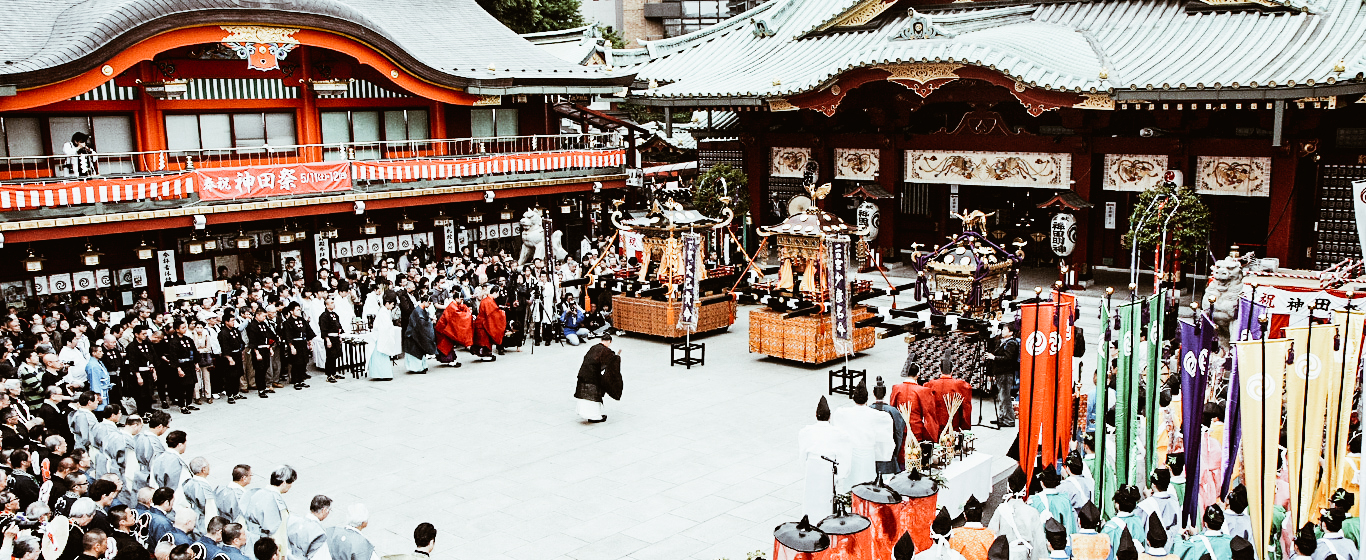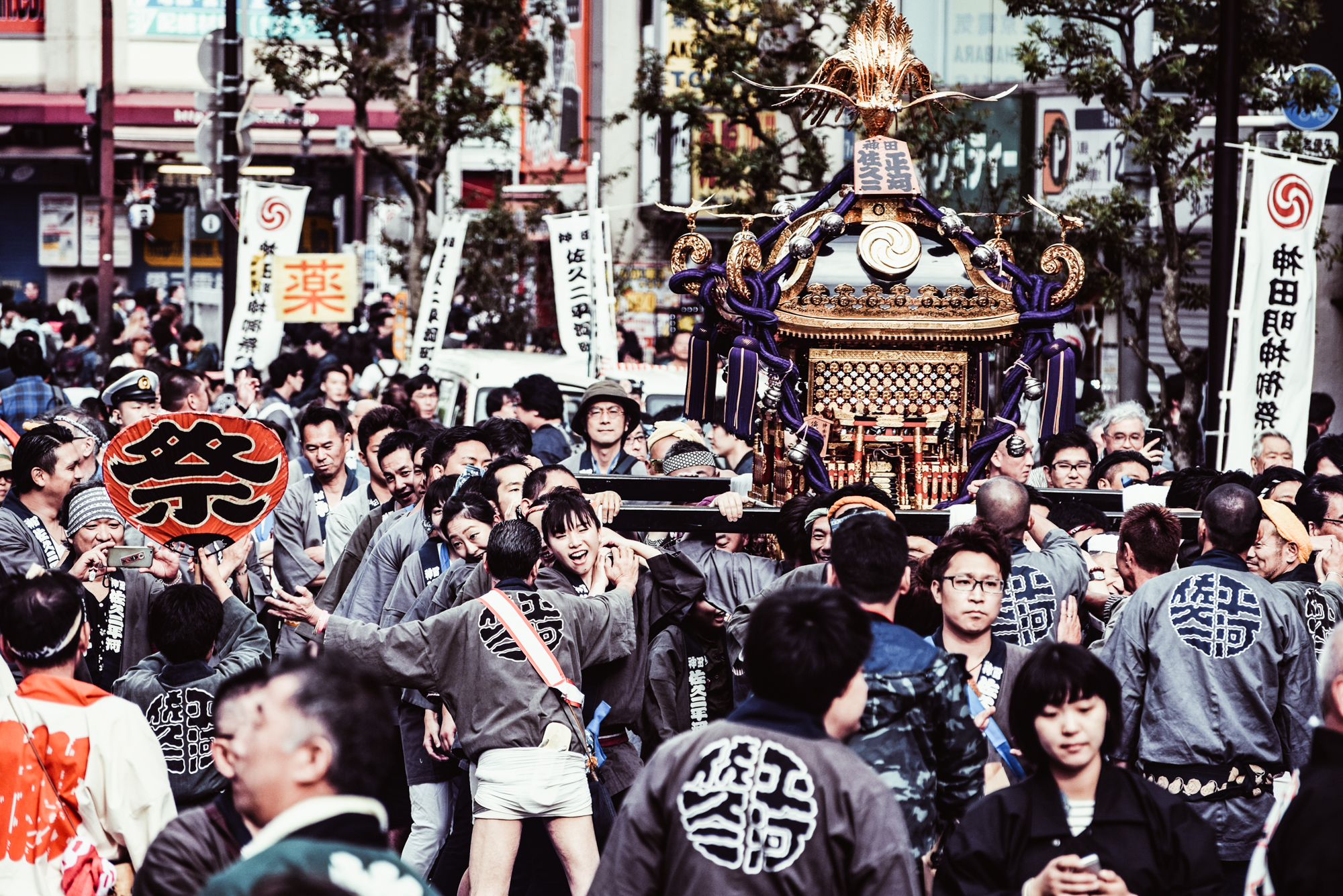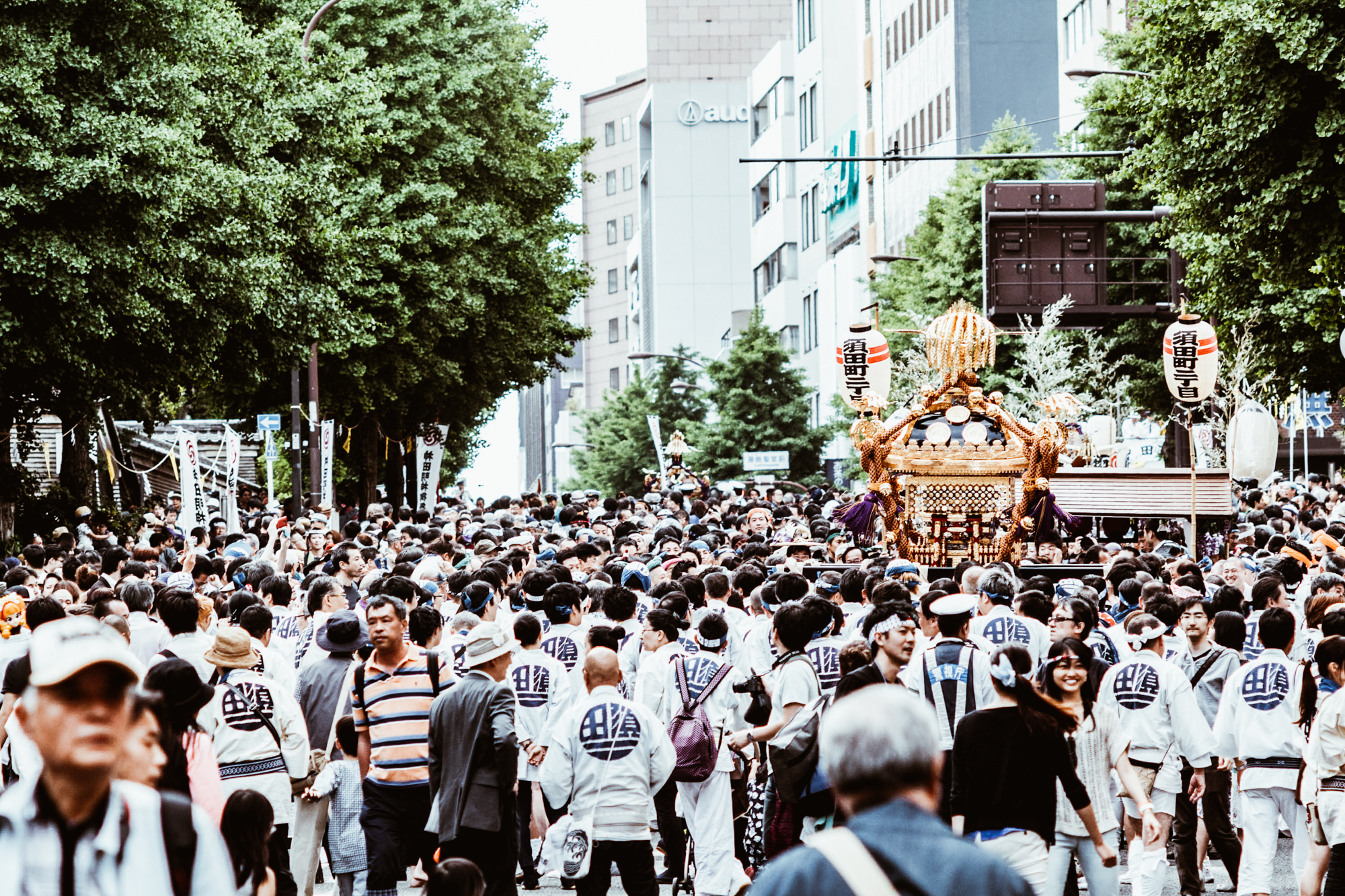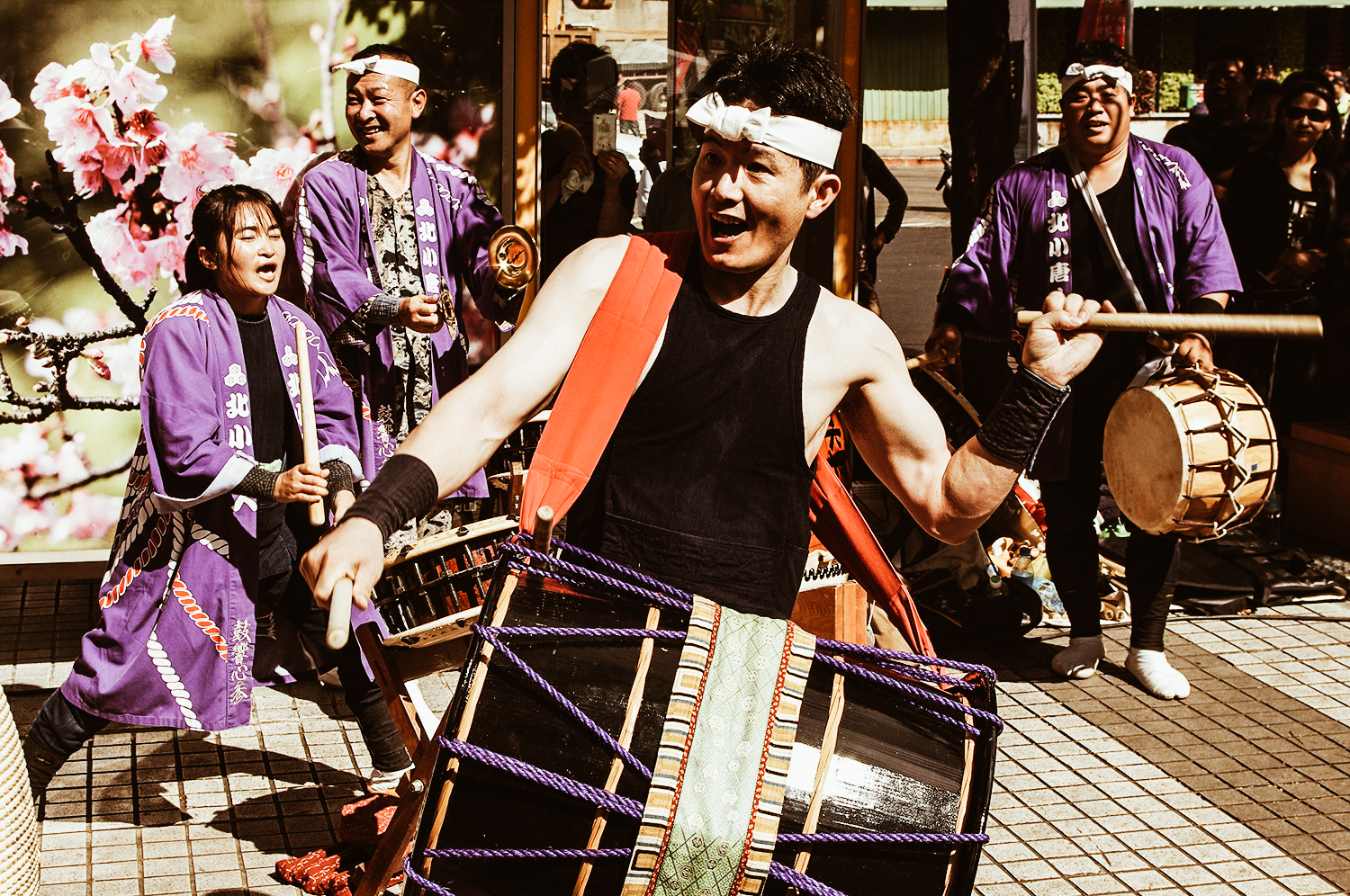Japan Tradition: Kanda Matsuri
Il Festival degli anni dispari

photo credits: dydo-matsuri.com
Solo negli anni che terminano con numeri dispari e sempre a metà maggio, nel quartiere di Kanda a Tokyo, ha luogo il Kanda Matsuri (神田祭). Esso è tra i matsuri più importanti di Tokyo assieme al Sanno Matsuri e al Fukagawa Matsuri. Fa inoltre parte dei tre più grandi festival del Giappone assieme al Tenjin Matsuri di Osaka e al Gion Matsuri di Kyoto.
Le radici del Kanda Matsuri affondano nel Periodo Edo (1603-1867), quando a governare la città di Edo (l’odierna Tokyo) era lo shogun Tokugawa Ieyasu. Proprio per questo motivo esso è conosciuto anche come Tenka Matsuri (Tenka significava shogun).


photo credits: xin beitou, Atsushi Ebara
Il festival fu celebrato come una dimostrazione di prosperità sotto il nuovo regime. Allo stesso tempo il Sanno Matsuri si teneva per celebrare il nuovo centro politico e i suoi governanti. A causa dei lunghi e stravaganti preparativi, e vista la competizione che si andava instaurando tra le due celebrazioni, si decise di alternarli. Secondo questa nuova regola, a metà maggio negli anni dispari si sarebbe festeggiato il Kanda Matsuri, mentre a metà giugno negli anni pari sarebbe stata la volta del Sanno Matsuri.
Oggi il Kanda Matsuri è il festival del santuario shintoista Kanda Myojin, a Chiyoda, incastonato tra moderni palazzi in una delle zone più lussuose di Tokyo. Il tempio appartiene a tre divinità: Daikokuten, il dio del buon raccolto e del matrimonio, Ebisu, il dio dei pescatori e degli uomini d’affari e Taira no Masakado, un samurai del X secolo venerato e in seguito divinizzato.


photo credits: rove.me, bill ben
La celebrazione della ricchezza e della fortuna
Come ogni festival che si rispetti, i rituali shintoisti sono i primi protagonisti dei preparativi. La sera prima della parata principale si invitano gli spiriti del tempio ad entrare nei tre mikoshi (piccoli tempi portatili) finemente decorati. Il giorno successivo, alle 8:00, i piccoli templi sfilano per le strade di Kanda , Nihonbashi, Otemachi e Akihabara, per poi tornare al tempio, attorno alle 19:00. Essi sono seguiti non solo da una folla immensa di persone, ma anche da musicisti, sacerdoti a cavallo e molti altri vestiti con colorati costumi tradizionali.


photo credits: nlgwest , Kemy Shibata
Al contempo, si tiene anche una piccola processione secondaria della durata di tre ore. A questa prendono parte uomini a cavallo vestiti da samurai, personaggi delle storie popolari, musicisti e ballerini che partono dalla Scuola Elementare di Arima nel primo pomeriggio e procedendo verso nord raggiungono il Kanda Myojin.
Il giorno seguente è dedicato alla parata dei mikoshi di vari quartieri nei distretti di Kanda e Nihonbashi. Ognuno di essi trasporta un ujigami, divinità guardiane che in questa occasione vengono ospitate nei mikoshi per benedire i residenti della zona durante il loro passaggio.

photo credits: Eugene Kaspersky
Tante piccole curiosità
Coloro che nascevano e crescevano a Edo erano chiamati “Edokko”. Gli edokko possedevano una spiccata personalità e pare che fossero molto aperti e gioviali. Caratteristiche queste che si riflettevano, e si riflettono ancora oggi, proprio nel Kanda Matsuri, una festa ricca di energia.
La sfilata con i suoi protagonisti richiama anche le celebrazioni per la vittoria di Tokugawa nella battaglia di Sekigahara che avrebbe aperto la strada allo shogunato che portò a un lungo periodo di pace e prosperità in Giappone. Originariamente, i cittadini indossavano particolari costumi onorando il tempio dando vita a sontuosi spettacoli di teatro Noh.


photo credits: tokyoexcess.blogspot.it, xin beitou
Durante il periodo Edo la parata passava accanto al castello di Edo con le sue magnifiche decorazioni, dando ai cittadini comuni una rara occasione di entrare nel perimetro del castello.
La maggior parte dei carri originali, che erano stati usati sin dai primi festival, sono andati distrutti nel Grande terremoto del Kanto del 1923 e dai bombardamenti della Seconda Guerra Mondiale.


photo credits: viajejet.com, fastjapan.com
Condividi:
- Fai clic per condividere su Facebook (Si apre in una nuova finestra)
- Fai clic qui per condividere su Twitter (Si apre in una nuova finestra)
- Fai clic qui per condividere su Tumblr (Si apre in una nuova finestra)
- Fai clic qui per condividere su Pinterest (Si apre in una nuova finestra)
- Fai clic per condividere su Telegram (Si apre in una nuova finestra)
- Fai clic per condividere su WhatsApp (Si apre in una nuova finestra)
- Fai clic qui per condividere su Reddit (Si apre in una nuova finestra)
- Fai clic qui per stampare (Si apre in una nuova finestra)






